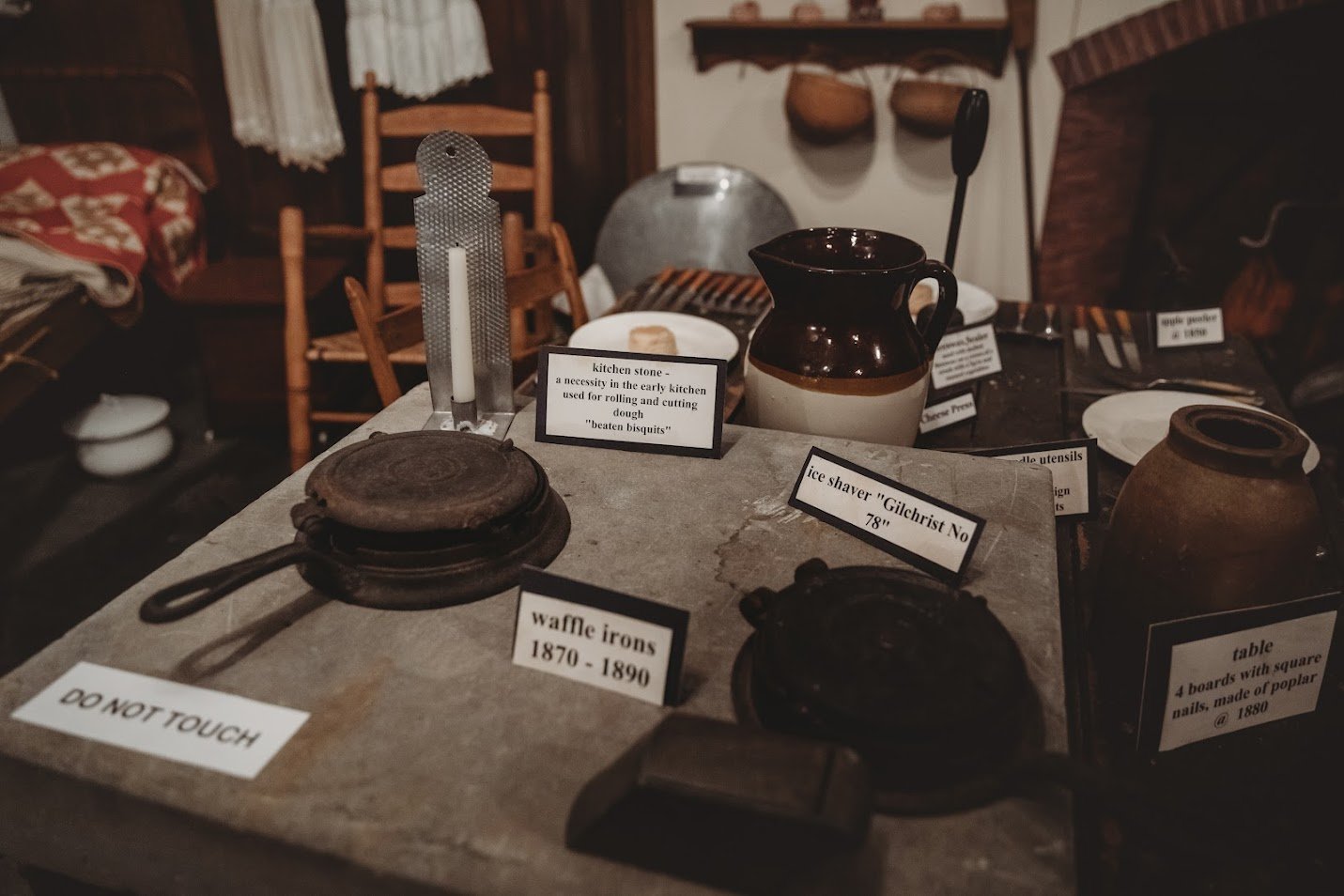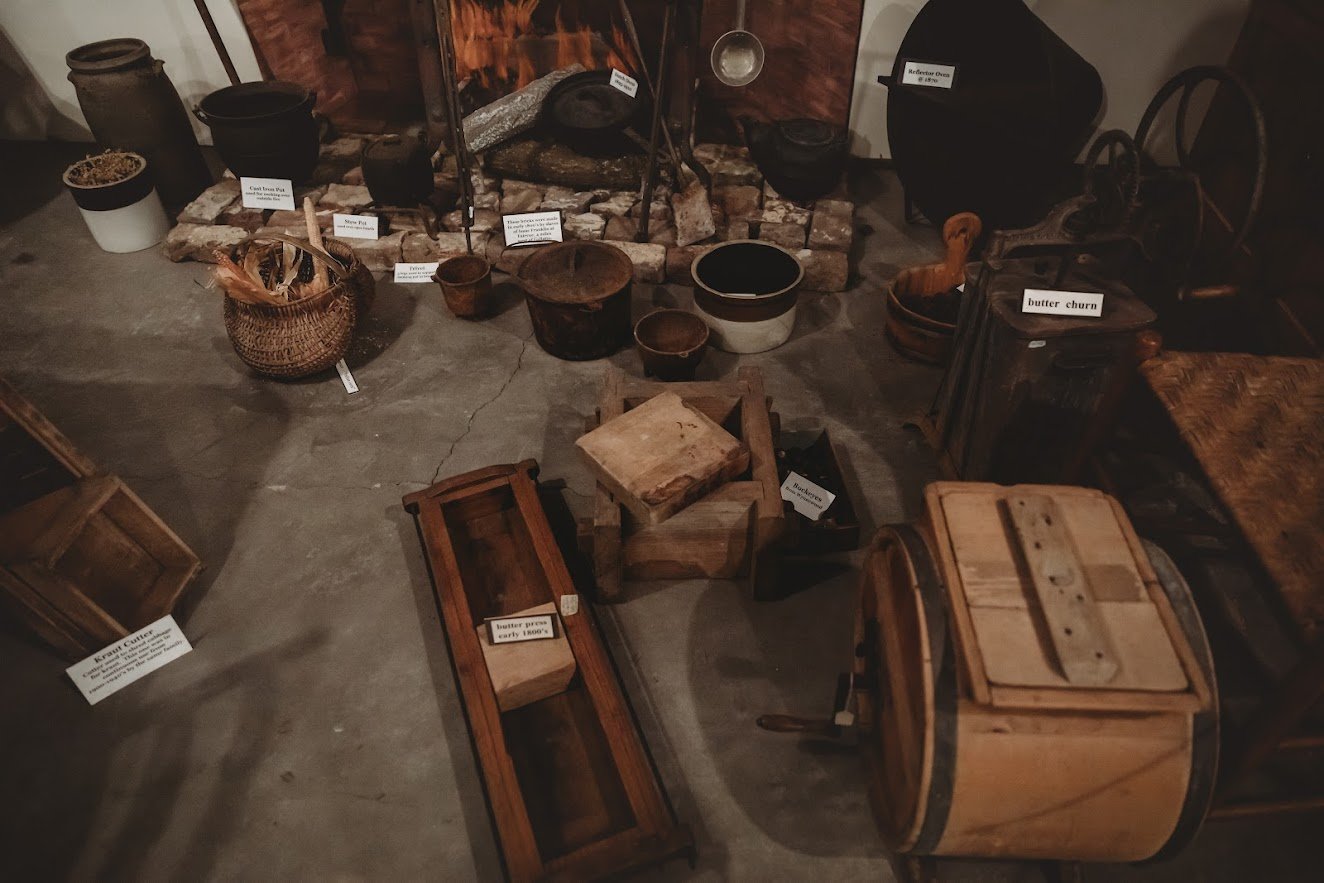Southern Cookin’ in the 1800’s
What’s for dinner? This is a common question for many every afternoon or evening, and for most of us, well, the options are almost endless. We can order out and pick it up, or have it delivered, dine out at our favorite restaurant, pop a frozen meal in the microwave or oven, grab a sack from a fast food joint, or prepare a meal ourselves with products we purchased from a grocery store or market. There is one other option: you could grow your own fruits, grains, and vegetables, while raising, slaughtering, and processing animals, and be truly self-sufficient when it comes to what is on your table, but really, who has time for that?
With today’s fast-paced lifestyle, we tend to plan our meals around our schedule, but it was not so long ago that it was just the opposite. Families planned their schedule around their meals.
While it is growing more common for men to do the cooking at home, during the 1800’s it was primarily the wife’s responsibility. Much of her day was spent preparing and cooking three meals, all from scratch, with no refrigerator, electricity, stove, or oven (as we think of an oven today). What!?! How is that even possible? Well, all the food was cooked on the hearth, which is the floor of the fireplace. Now if you are envisioning a rabbit stretched out over an open flame on a campfire, then you are on the wrong track.
In the 1800’s, many homes had a kitchen that was detached from the rest of the house. Trousdale Place, located near Gallatin’s downtown historic square, had a detached kitchen, which was located where the Sumner County Museum now stands. The kitchen burned down, which is one reason that they were often detached. Another reason was that kitchens were very hot and smoky. There were no exhaust fans like we have over our stoves today, only the chimney.
Many kitchens were equipped with items such as a Dutch oven, reflector oven and butter churns. By the late 1800’s butter churns made making butter a much easier chore. Butter is made from milk. First the cow had to be milked early in the morning. Next, the milk was brought inside and it would sit for some time, allowing the cream to separate. The cream was then placed in a separate container and beat until it turned into butter. Butter was – and is – an important ingredient in many recipes and dishes. A Dutch oven is simply a cast-iron pot with a lid that sat near or on the hot coals that heated its contents from the top and bottom. Anything from bread to stews were cooked in this oven. A reflector oven is made of tin and was open on one side so that the heat reflected towards what was placed in it. Pies, biscuits, and cakes were commonly cooked in this type of oven.
While the women spent most of their day preparing and cooking meals, the men were busy farming, hunting, fishing, and tending to the livestock. Wild game, such as deer and turkey were commonly consumed as well as pigs. Pigs were a staple in the south. They were raised in the spring and summer months and could weigh up to five hundred pounds. They were butchered in late fall or winter. “Hog killin’ time” became a time to celebrate and for families to gather together and enjoy each other’s company.
To “cure” or preserve the meat, it was salted and smoked. Hams and other parts were salted in salt boxes for about a month. Then they were hung in a smoke room. Small, controlled fires were built using wood chips to smoke the meat giving it a delicious flavor. This was generally done during a long cold snap since there was no refrigeration. Fruits and vegetables were preserved by drying them out.
One thing I love about living in Sumner County is that there are several farmers who still raise their own hogs and follow the steps for curing the meat as it was done in the 1800’s. Rufus Reese with Reese Brothers Mule Company and Dennis Galloway with Galloway Farms make some of the best sausage, bacon, and county hams around. It has become tradition at my house to enjoy big breakfasts with these fresh local products around Christmas every year.
So, the next time that you are complaining about having to cook dinner or trying to get your spouse to decide where they want to eat (because we all know how difficult that can be), just remember this could be an all day, every day, routine.


